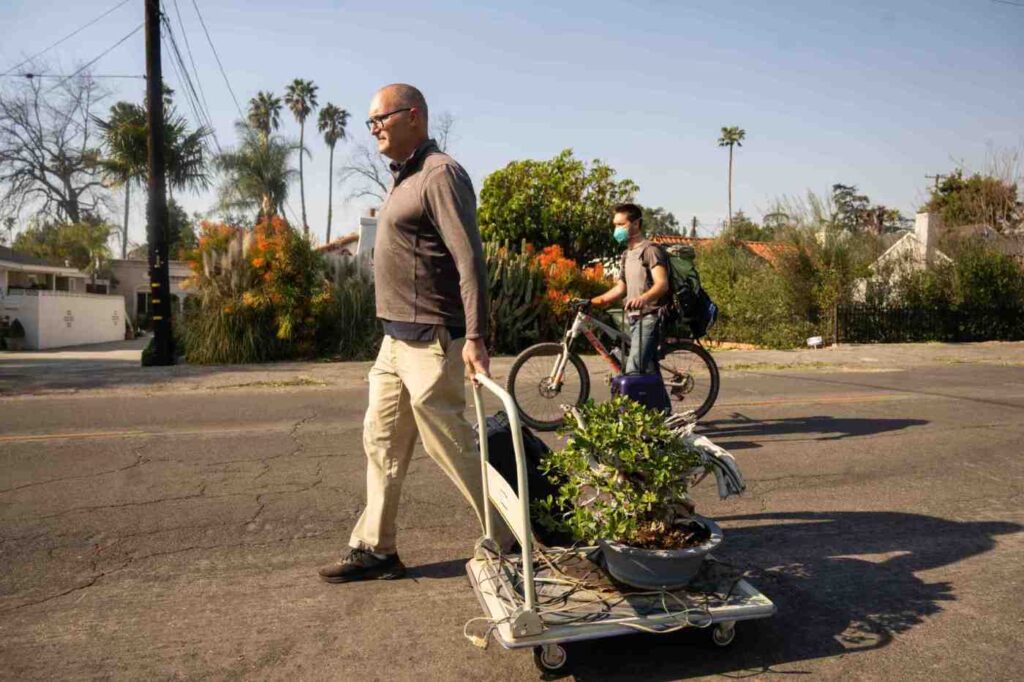
Last summer, due to a nearby brush fire, my husband and I were mandated to quickly evacuate our house. While the fire was nothing comparable to what occurred in January in Southern California, it was fast-moving and burned down several homes in our community.
What I clearly remember is how I felt when I was gathering items to evacuate. The experience was surreal.
I walked from room to room feeling as if most of our possessions could be replaced and would not be missed. With assistance from family members, I gathered a few heirlooms, photos, legal documents, and other necessities.
Without the help of others reminding me to grab certain items, I would have left many more crucial items behind.
Fortunately, we didn’t lose anything; the fire crews worked feverishly, and the wind patterns changed just as the flames approached our house. All of the homes on our street were saved.
After I returned home and unpacked our belongings, I realized that I needed a better plan. I had forgotten to take many crucial items in the rush to evacuate. Some of these things were clearly in view as I gathered items, but I still overlooked them.
To plan for the next disaster, I prepared a checklist that addressed our specific household needs and attached the list to my bag of essential documents. If I’m ever in a similar position, I can grab the items that our family will need.
Many people in the recent fires won’t have a second chance to rewrite their checklist, because they’ve lost everything and aren’t returning home. Those of us who haven’t been directly impacted can learn from the tragedy and plan accordingly, so we’re better prepared for the next time.
Prepare and implement a plan
Talk to everyone you live with and tailor a strategy specific to your household. Would anyone need additional assistance evacuating? Plan to address those needs. Then, practice. When my daughter was young and not extremely neat, part of our plan was she needed to always have a clear path from her bed to the door. No exceptions.
Establish routines and prepare for disaster.
—The same month every year, replace the batteries in your smoke detectors, flashlights, and any other tool or device that you may need in an emergency. Also check the expiration dates on your stored water and nonperishable food during this same period.
—Identify your risks and take the appropriate actions to manage and prepare the inside and outside your home for a natural disaster. Do you need to maintain brush clearance or trim your trees away from the outside of your home? Does furniture in your home need to be bolted to the wall, because it could fall over in an earthquake?
—Call your insurance company and verify that your coverage is appropriate for the value of your home and adequate for the risks in your region. Inquire with your agent about adding your trust as an additional insured to your policy. If you’re renting, purchase renters insurance for an amount that will replace your possessions if you file a claim.
—If you do ever need to file an insurance claim, it’s nearly impossible to remember all your possessions. Annually record or photograph every room, including the garage and yard. Open the cabinets and closet doors to document all of your property.
—Walk around your home and as you do, ask yourself if the power were out, would you know how to open the garage door manually, or the electric gate at the driveway entrance? Do you know how to turn off the gas to your home?
—Consider buying a generator. Even if you’re not directly affected by the natural disaster, your power could be out for an extended period while your region recovers.
Save your important documents on a secure, password-protected cloud-based location, including estate planning documents, tax returns, insurance policies, registration and title for your vehicles, your marriage certificate, death certificates, divorce, and adoption documents, as well as jewelry and art appraisals.
Don’t forget passports, Social Security cards, green cards, military cards, and any other form of legal identification.
Confirm that all your family members’ contact and any other pertinent information is saved on your phone. Under each contact is a Notes section. Add information relevant to your family contacts in those notes. Confirm that your insurance information and policy numbers are saved, prescriptions are noted, and other vital information is stored in Notes for quick access.
Teach all family members to text. In emergencies, mobile networks may be overloaded, and texting requires less bandwidth. Designate a text group specifically for this purpose. Additionally, Facebook has a safety feature that allows users to easily post status updates during a time of disaster.
Store an emergency bag in your car filled with essentials. Keep your vehicle charged or fueled. If your home is damaged by a natural disaster, assume that the surrounding businesses are too. Plan for the worst and assume that your local gas and charging stations will be closed.
Related Articles
When you will earn miles on a flight and when you won’t
Looking for Boulder 2.0? These cities fit the bill for many remote workers
3 steps to uncovering your true financial goals
12 of the best investing books, from deep dives to lighter reads
Musk team’s access to student loan systems raises alarms over personal information for millions
The Red Cross has a variety of emergency bags and backpacks available for purchase as well as a helpful survivor kit checklist available at: redcross.org/get-help/how-to-prepare-for-emergencies/survival-kit-supplies.
Natural disasters vary depending on where you live, from earthquakes to tornadoes. When planning, identify your local risks, and then do the necessary work to implement the plan.
Dwight D. Eisenhower once said, “Plans are nothing; planning is everything.”
Do the work to ensure that your plan is something, not just a shell of an idea. Someday, the value of the planning could be priceless.
Teri Parker is a certified financial planner and vice president for the Riverside office of CAPTRUST Financial Advisors. She has practiced financial planning and investment management since 2000. Contact her via email at Teri.parker@captrust.com.
